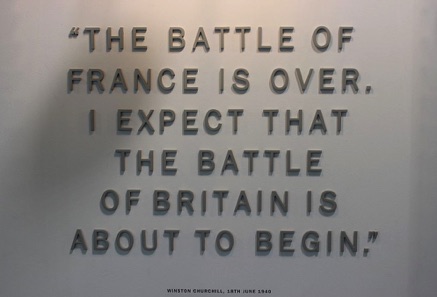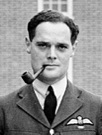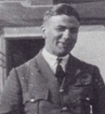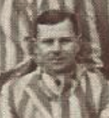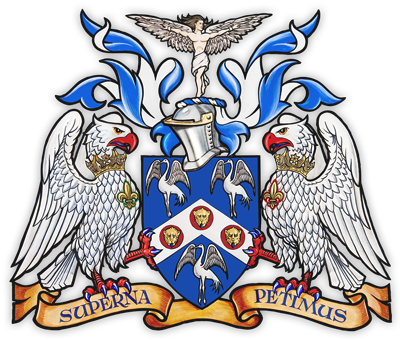Bayne, David Walter (9-26A)
David Bayne was born on 17th April 1908 and attended Haileybury ( East India College ) at Hartford Heath. He entered the College in 1926 and trained there until December 1928. He then went on to fly pretty much every type of classic fighter and many other aircraft types which the service operated during the 1920's to the 1950's. Interestingly, Douglas Bader arrived at RAF Cranwell for his Cadetship in September 1928, so it's odds on that David Bayne knew Bader as a 'new boy'! His four log books record in unusually exacting detail his years of service ( including all combat sorties ) in India on the North West Frontier & Waziristan. He has also recorded in equally precisely dated detail his entire service career, stations, squadrons, promotions and a complete list of aircraft types flown. These coupled with a complete list of all airfields and landing grounds visited throughout his 29 year RAF career make this log book set an aviation researchers dream. Contained within the covers of these four wonderful volumes is a record of some of the most important post WW1 colonial combat & other flying in British Imperial history. David Bayne will (should) surely go down in history as one of 'the' classic aviators of post-WW1, interwar period, WW2 and post WW2 RAF aviation. Few pilots served with such wide distinction on so many aircraft types, in so many important positions and places, or over such a prolonged period. It is therefore unusual in the extreme that he wasn't decorated at any time. Station and Squadron Commanders of the calibre of David Bayne are almost invariably the recipients of the Air Force Cross or CBE. His flying assessments throughout his service were recorded as being generally 'above average' and he was quite clearly one of the most capable & experienced RAF pilots of his time. David had a serious flying accident while landing a Bristol Bulldog Mk IIa, K2870 at RAF Duxford at night in thick fog. Understandably, he totally misjudged the landing, and probably 'flared out' far too late on the approach, if not at all, with the aircraft clearly hitting the runway extremely heavily and still with some flying speed. The Bulldog had serious low speed directional stability problems, so there would probably have been a 'hard bounce' or ground loop with a subsequent total loss of control and an immediate low level stall followed by a final wing tip contact 'flip', impact and slide...possibly inverted .....definitely not recommended !!! The machine was thus written off as a total loss. David was badly injured and lost a leg in the accident. He was then taken off flying duties for just over two years (on half pay) while he attended various RAF hospitals and rehabilitation units. Full of guts and determination, and with the will to fly again he had a wooden leg fitted and returned to flying in August 1937. For obvious reasons during this period he became a great friend of the then Squadron Leader Douglas Bader who of course famously also 'eventually' continued to fly with two false legs. Bader's accident while doing an impromptu and totally unauthorised (nay forbidden) low level aerobatic display was also in a Bristol Bulldog Mk IIa some years earlier in 1931 at Woodley near Reading. By September 1939 at the outbreak of war David Bayne had been flying again for just over two years and was now a seriously experienced pilot and although wearing a prosthetic leg his performance was unaffected. He was then charged with the re-formation of No. 257 Squadron, initially with Spitfires at RAF HENDON. He was given an adjutant, 20 pilots that consisted of 10 officers and 10 airmen, an engineer and 141 airmen. Later the unit re-converted to Hurricanes, so training had to start all over again, and it was with this squadron between 1st & 22nd July 1940 that he flew about 20 sorties of which six were pre-emptive combat patrol sorties and shipping protection patrols in Hurricanes over the Dover area during the early days of the Battle of Britain.
(BENTLEY PRIORY, H.Q. FIGHTER COMMAND) At the end of July 1940, and now being aged 32 (13 years older than the average Battle of Britain fighter pilot) and having successfully (twice) re-formed 257 Squadron he was suddenly & much to his displeasure, ignominiously moved to HQ FIGHTER COMMAND. Squadron Leader Bayne had built a superb squadron that had the dedication and respect of their commanding officer. But it was to be short lived. On 21st July 1940, Bayne informed his officers and men that he had been promoted to Wing Commander and was being transferred off operational duties because it was felt by the Air Ministry that, "it was impractical to have an operational commander with a wooden leg". Clearly, in Bayne's case, there were other factors at play as the Air Ministry had already given a full squadron command to Douglas Bader, who although two years younger, did of course have two prosthetic legs. Pilot Officer Geoff Myers the intelligence officer of 257 squadron said of Bayne, "that apart from using a walking stick he was otherwise absolutely normal. You just could not wish for a better leader, he was just the man that we needed. it was disastrous for the squadron, David had built up a strong relationship with the men". Taking all factors into account It was also felt by the RAF that his great experience and organisational abilities would be better employed in the higher levels of the Fighter Command structure. He was thus posted to HQ FIGHTER COMMAND at RAF BENTLEY PRIORY where he served with great distinction and in a close & senior capacity alongside Air Chief Marshall Sir Hugh Dowding, Commander in Chief RAF Fighter Command during the remaining duration of The Battle of Britain. One can only imagine the heights of combat excellence which David Bayne would have achieved had he been allowed to continue as C.O. of 257 Squadron during the full duration of The Battle of Britain ! Bayne's subsequent service is currently undocumented until 1948 when he was Military and Air Attache in Rio de Janeiro. He retired from the RAF on 29th August 1955 as a Group Captain. He died in Dorset on 11th June 1986.
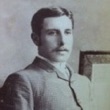
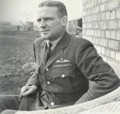
Barnett Richard Edgar (1-30B)
Barnett attended Cheltenham College and then went to RAF College Cranwell as a Flight Cadet in January 1930. He graduated in December 1931 and then joined 54 Squadron at Hornchurch on the 19th. Posted overseas in September 1932, Barnett joined 6 Squadron at Ismailia on 1st November. He went to the RAF Depot at Aboukir in July 1935. In the Coronation Honours List Barnett was made an MBE (gazetted 11th May 1937) for operations in Palestine from April to October 1936. After returning to the UK he went to the A&AEE at Martlesham Heath on 16th August 1938. When the CO of the newly-formed 234 Squadron was badly injured in a car accident on 2nd November 1939, Barnett took command at short notice. He did not fly very often and relinquished his command on 13th August 1940. He resigned his commission on 11th August 1941. After the war Barnett worked in Kenya and died on 2nd January 1970. © Battle of Britain London Monument Archive




